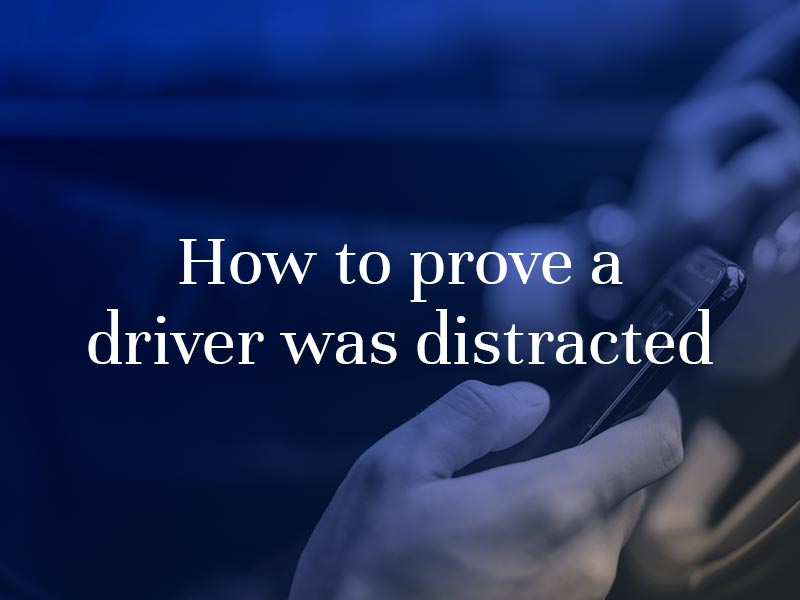
How to Prove a Driver Was Distracted
Colburn Law
Posted in Car Accidents,Personal Injury,Safety Tips on February 17, 2020

Distracted driving is an unfortunately common yet extremely dangerous driving practice across the United States, including Washington. According to the Centers for Disease Control and Prevention (CDC), more than 9 people die and 1,000 people suffer injuries each day due to accidents with distracted drivers.
If you are the victim of a distracted driver, you can claim compensation for your injuries by filing a personal injury lawsuit or insurance claim with a qualified car accident lawyer. However, the burden of proof rests with you to show that the driver who injured you was engaging in distracted driving. In these situations, you and your attorney will need to work closely together to gather the evidence you need to win your case.
What Is Distracted Driving?
Before you can prove that the driver was engaging in distracted driving at the time of your accident, you first need to understand what distracted driving actually looks like. Most often, we think of talking on the phone or texting when we hear the term — but there are actually three distinct types of distracted driving, each of which can appear in some form in your case.
- Cognitive distractions occur when something takes your mind off the act of driving, such as having a conversation, turning around to look or talk to another passenger, or daydreaming.
- Manual distractions take your hands away from controlling the vehicle, such as eating or drinking, fiddling with the GPS or radio, or using a cell phone.
- Visual distractions take your eyes off of the road, such as looking in the mirror, looking at a phone or GPS screen, or looking around for a fallen object in your vehicle.
For more information: Washington State Distracted Driving Law
One action can combine multiple types of distractions. For example, sending a text message while driving is a manual distraction, since you have to take your hands off the wheel to send the message, a visual distraction, since you have to look at the screen, and a cognitive distraction, since you have to think about what you are typing and reading.
If you can identify what type of distraction that the driver was engaging in at the time of your accident, you can begin to gather the evidence that can help you prove your claim.
Useful Evidence in a Distracted Driving Case
To successfully prove a distracted driving case, you and your attorney will work closely together to establish the following four elements.
- First, you will prove that the driver owed you a duty of care to drive safely and obey all traffic laws, including laws against distracted driving.
- Second, you will need to prove that the driver breached his or her duty of care to you by engaging in distracted driving.
- Third, you will show that this breach of care directly caused the injuries you are claiming compensation for.
- Fourth, you will prove that you suffered damages that you can claim compensation for in your lawsuit, including economic and non-economic damages.
When you go to court or negotiate with an insurance company about your claim, you will need to provide sufficient evidence to support each of these four key elements. Your attorney will help you gather all necessary documents and access hard-to-obtain resources to prove your claim and show that the driver was distracted, such as the following.
- Medical records that detail the injuries you suffered in the accident
- Surveillance and traffic light footage of the accident, especially footage of the distracted driver
- Copies of the police and traffic reports law enforcement officers created after the accident
- Testimony from witnesses who were present at the scene
- Testimony from medical experts who can attest to the severity of your injuries and the cost of your recovery
- Any physical evidence you may have, such as photographs or videos
Proving a distracted driving case can be very complicated, depending on the circumstances of your accident. If you do not have an attorney on your side, it can become even more difficult as you lose access to resources, expert connections, and knowledge of trial and negotiation strategies. Contact a car accident attorney as soon as possible following your crash to maximize your post-accident compensation potential.



